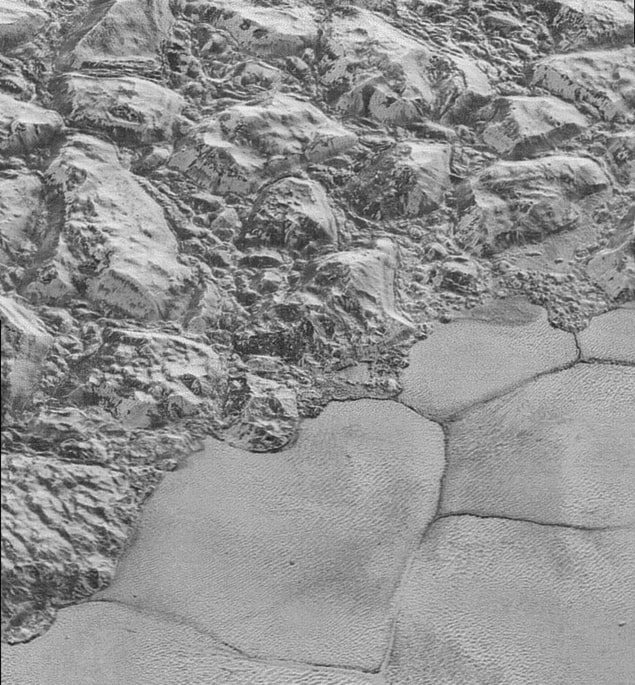
Dunes made of frozen grains of methane have been spotted on the surface of Pluto. Blown by winds blowing at speeds of up to 40 km/h, the sand-sized grains travel across the dwarf planet’s Sputnik Planitia ice plane and form dunes that push up against a mountain range.
The features were spotted by a team of geographers, physicists and planetary scientists while studying detailed images of Pluto’s surface that were taken in July 2015 by NASA’s New Horizons spacecraft.
The dunes cover an area less than 75 km across and are believed to be relatively young – possibly forming within the past 500,000 years. Sputnik Planitia is thought to comprise mostly frozen nitrogen, with small amounts of methane and carbon monoxide ice also present.
The researchers believe that the sublimation of nitrogen from solid to gas results in the release of methane grains. The grains are then transported by the wind in a process called saltation, which is also responsible for sand dunes on Earth.
Instantly recognizable
The study was led by researchers at the UK’s University of Plymouth, the University of Cologne in Germany and Brigham Young University in the US. “When we first saw the New Horizons images, we thought instantly that these were dunes but it was really surprising because we know there is not much of an atmosphere,” says Brigham Young’s Jani Radebaugh.
Plymouth’s Matt Telfer adds that the team “had to work hard to explain how it was possible to get the supply of sediment, a non-cohesive surface and wind you need for dunes”.
Eric Parteli from Cologne points out that the low gravity and low atmospheric pressure on Pluto mean that much lower winds are needed to drive saltation on Pluto as compared to Earth. Temperature gradients in the ice caused by solar radiation could also boost the process, he says. “Put together, we have found that these combined processes can form dunes under normal, everyday wind conditions on Pluto.”
The observations are described in Science.



